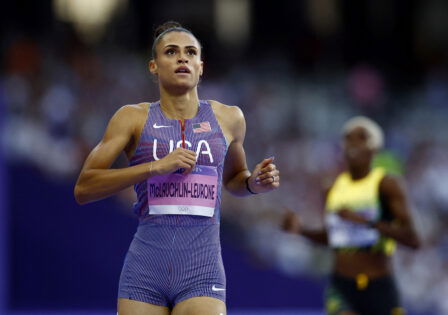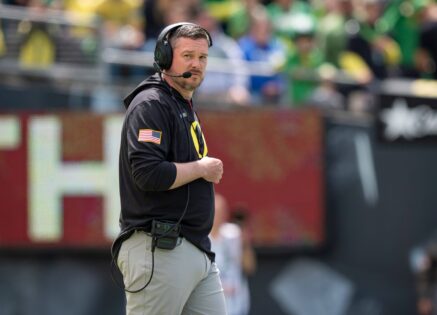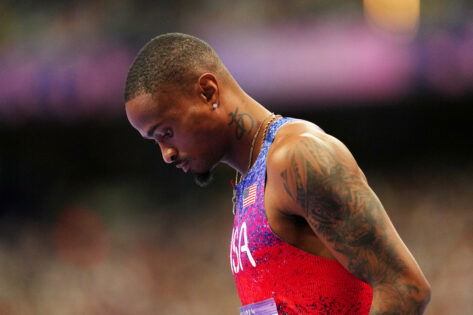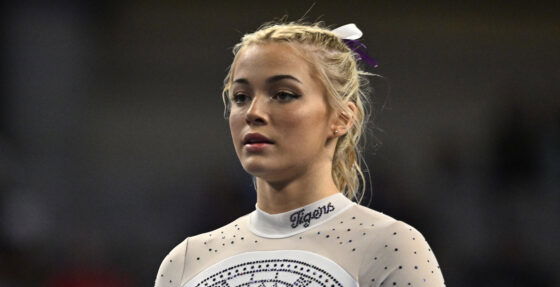Michael Johnson dreamed big, and he wasn’t quiet about it. “There are 2.5 billion people around the world who are interested in running or watching track,” he said on March 27, less than two weeks before his league’s debut. “We just haven’t had a home for the fastest athletes to deliver that… like what you see during the Olympics.” That home, he believed, would be Grand Slam Track. A sleek, fast-paced series built to bottle Olympic magic and unleash it on a global stage. But that dream hit a wall hard when the lights came up on April 4 in Kingston’s National Stadium.
The roster was stacked. Sydney McLaughlin-Levrone, Gabby Thomas, Marileidy Paulino, Oblique Seville, Danielle Williams plus 17 Jamaican stars, all in one place. But the crowd? Just 6,000 people scattered in a venue built for 35,000. Grandstand? Passable. Bleachers? Empty. One week after ISSA Champs brought down the house, GST’s opening night didn’t exactly go how they wanted it to. And in the days that followed, the scramble began.
Then came the unexpected move, caught not on TV, not in a press release, but in a low-key Instagram story from Jamaican star Ackera Nugent. World Athletics even shared it on X, signaling just how odd (and telling) the moment was. “If you arrive at GST between 3pm and 5pm, you can get into Bleachers for FREE without a ticket,” the post read. “After 5pm you will have to pay.” For a league that billed itself as the track and field’s ‘This Is It‘ event, this sudden pivot to free entry felt less like strategy and more like survival mode. Moreover, the organizers made it clear. They had to fill seats and change the optics fast.
Ackera Nugent on Instagram.
If you arrive at GST between 3pm and 5pm you can get into Bleachers for FREE without a ticket.
After 5pm you will have to pay. pic.twitter.com/UT2YkF8Wuc
— World Athletics Hub (@wldathleticshub) April 5, 2025
Turns out, that surprise Instagram story was just the beginning. Grand Slam Track doubled down with a new push. This time targeting the next generation of fans. On April 5th, the Inter Secondary School Sports Association (ISSA) sent a message to coaches across Jamaica that read, “All schools can attend the Grand Slam Meet free of cost tomorrow and Sunday for the bleachers.” Just like that, the bleachers were open to students; no ticket was needed.
The initiative was clear. Fill the seats, bring energy, and tap into Jamaica’s unmatched love for track. The ISSA’s message kept it simple: “Just turn up at the bleachers, and you will be allowed in.” And honestly? It’s a smart play. Young fans who idolize their heroes now had front-row access to global stars like Sydney McLaughlin-Levrone and Gabby Thomas. No hassle, no cost. It may not have been the original plan, but it might just be the spark GST needs to find its heartbeat.
Grand Slam Track stars deliver amid sparse crowd
Sydney McLaughlin-Levrone, Gabby Thomas, Marileidy Paulino, and more. The Grand Slam Track’s launch had the kind of star power that makes headlines. Moreover, a few days before the event, Michael Johnson himself was hyping a possible Sydney vs. Paulino faceoff and broke down why GST would stand apart from anything else the sport had seen. “Our format is unique, where athletes have to run multiple races,” Johnson said. “We have Marileidy Paulino, who’s the Olympic champion in the 400, who’s going to have to run against Sydney in that 400. So it’s a really interesting format.”
And from the outside, it all looked like an NBA All-Star game. Promos flooded the internet, buzz took over social media, and for a moment, it felt like GST finally claimed the spotlight it deserved. The opening act? Gabby Thomas in the women’s 200m. First race of the entire Grand Slam Track series. Fans expected fireworks and Thomas delivered. She came off the bend trailing Dina Asher-Smith, then did what she does best. Hit the gas and surged to victory in 22.62 seconds. Paulino took second, Asher-Smith third. Interestingly, it was the kind of race that should’ve brought the crowd to its feet.
Except… there wasn’t really a crowd. When Gabby crossed the finish line, the roar you’d expect never came. In fact, there was barely any noise at all. The turnout reshaped expectations for a launch that aimed to transform the sport. The energy inside Kingston’s National Stadium didn’t match the talent on the track, and that disconnect was impossible to ignore.
Moreover, that’s exactly why Johnson, a four-time Olympic gold medalist who knows the grind pushed to build something bigger with Grand Slam Track. “Grand Slam Track is the equivalent of UFC and Formula One,” he boldly claimed. And yet, when the moment came to deliver on that vision, the seats told a different story. If this was supposed to be the beginning of a new era… it began in silence.
The post Failing Sydney McLaughlin-Levrone & Co. Grand Slam League Fall to Desperate Ways to Save Face appeared first on EssentiallySports.



